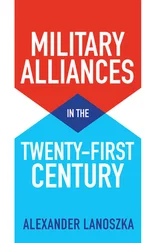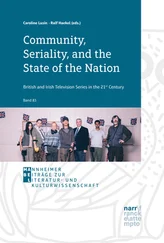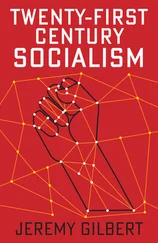‘Multi-alignment’, it is true, is at one level an amoral strategy: it would see India making common cause with liberal democracies when it suited India to do so, and dissenting from them when (as on Myanmar, Iran and on certain aspects of the Arab Spring) it was expedient for India to preserve relationships that the other democracies could afford to jettison. It is also a promiscuous strategy, since it exempts no country from its embrace; China, a potential adversary with which we have a long-standing frontier dispute that occasionally erupts into rhetorical unpleasantness, nonetheless is a crucial partner in several of these configurations. It is a strategy of making and running shifting coalitions of interests, which will require some skilful management of complicated relationships and opportunities — in policy environments that may themselves be unpredictable. That should not be excessively difficult for governments in New Delhi which, for more than two decades, have had to spend their time and energy on managing coalitions in Indian domestic politics.
Multi-alignment also constitutes an effective response to the new transnational challenges of the twenty-first century, to which neither autonomy nor alliance offer adequate answers in themselves. An obvious example is dealing with terrorism, which requires diplomatic and intelligence cooperation from a variety of countries facing comparable threats; but also shoring up failing states, combating piracy, controlling nuclear proliferation and battling organized crime. In addition to such issues there are the unconventional threats to the peace that also cross all borders (pandemics, for instance), and the need to preserve the global commons — keeping open the sea lanes of communication across international waters so that trade routes and energy supplies are safeguarded, ensuring maritime security from the Horn of Africa to the Straits of Malacca, protecting cyberspace from the depredations of hostile forces including non-governmental ones, and the management of outer space, which could increasingly become a new theatre for global competition.
Strategic autonomy is all very well, but it cannot be the be-all and end-all of India’s attitude to the world. Our sovereignty is no longer under threat; there is no power on earth that can presume to dictate to India on any international issue. It is time for us to build on our much-vaunted independence of thought and action by treating our strategic autonomy as a platform from which to soar, not a ball and chain around our ankles. As a major power we can and must play a role in helping shape the global order. The international system of the twenty-first century, with its networked partnerships, will need to renegotiate its rules of the road; India is well qualified, along with others, to help write those rules and define the norms that will guide tomorrow’s world. Rather than confining itself to being a subject of others’ rule-making, or even a resister of others’ attempts, it is in India’s interests (and within India’s current and future capacity) to take the initiative to shape the evolution of these norms as well as to have a voice in the situations within which they are applied. That is what I have called Pax Indica: not global or regional domination along the lines of a Pax Romana or a Pax Britannica (in which military victory by the Romans and the Britons, respectively, ensured that peace prevailed because potential adversaries were too exhausted to resist), but a ‘Pax’ for the twenty-first century, a peace system which will help promote and maintain a period of cooperative coexistence in its region and across the world.
This ‘Pax Indica’ must be built and sustained on the principles and norms that India holds dear at home and abroad. It would see a democratic and pluralist India working for a world order that sustains and defends democracy and pluralism; a ‘multi-aligned’ India serving as one of the principal fulcrums of a networked globe, in which countries pursue different interests in different configurations; an India free of poverty, growing and engaging in trade and investment in and with the rest of the world, and upholding arrangements that make such trade and investment relationships possible; an increasingly prosperous India, prepared to share the benefits of its prosperity with other nations on its periphery and its extended (land and maritime) neighbourhood; and a technologically savvy India, setting its sights on, and lending its expertise to, the management of outer space and cyberspace in the common interests of humanity.
The title of this chapter suggests that it offers thoughts ‘towards’ a grand strategy for India. My friend Keerthik Sasidharan asked me, ‘When the state is weak, or at best a wobbly or “jelly” state, can it project a “grand” strategy?’ I believe the Indian state is not as weak as its critics imply, and that the outlines of a grand strategy have been implicit in its approach to the world in recent years. The present volume has attempted to pull some of these strands together into a credible tapestry, but it is still a work in progress, with many weaves yet to emerge from the loom. Perhaps one of the readers of this book will take the argument further — if not today, then in twenty years, when many of the trends discerned in this book will have fructified, or withered on the vine.
In keeping with Nehru’s original vision, the ‘Pax Indica’ I have outlined would not even principally be about India at all, but about India’s sense of responsibility to the world of which it is such a crucial part — and whose destiny it has earned the right to help shape.
Chapter Ten: India, the UN and the ‘Global Commons’: The Multilateral Imperative
*‘Riding’ is Canadian for ‘constituency’.
Cohen, Stephen P. India: Emerging Power . Washington, DC: Brookings Institution Press, 2001.
Damodaran, A.K. Beyond Autonomy: Roots of India’s Foreign Policy . New Delhi: Somaiya Publications, 2000.
Datta-Ray, Sunanda K. Looking East to Look West: Lee Kuan Yew’s Mission India . New Delhi: Penguin Books India, 2009.
Dixit, J.N. Across Borders: Fifty Years of India’s Foreign Policy . New Delhi: Picus Books, 1998.
—. India’s Foreign Policy 1947–2003 . New Delhi: Picus Books, 2003.
—. Indian Foreign Service: History and Challenge . Delhi: Konark Publishers, 2005.
Emmott, Bill. Rivals: How the Power Struggle Between China, India and Japan Will Shape Our Next Decade . London: Allen Lane, 2008.
Jha, Prem Shankar. Crouching Dragon, Hidden Tiger: Can China and India Dominate the West? New York: Soft Skull Press, 2010.
Khilnani, Sunil, et al. ‘Nonalignment 2.0: A Foreign and Strategic Policy for India in the Twenty First Century’. New Delhi: Centre for Policy Research, 2012.
Malone, David. Does the Elephant Dance? Contemporary Indian Foreign Policy . New Delhi: Oxford University Press, 2011.
Markey, Daniel. ‘Developing India’s Foreign Policy “Software”’, Asian Policy 8 (2009): 73–96.
Menon, Adm. Raja, and Rajiv Kumar. The Long View From Delhi: Indian Grand Strategy . New Delhi: Academic Foundation, 2010.
Meredith, Robyn. The Elephant and the Dragon: The Rise of India and China and What It Means for All of Us . New York: W.W. Norton, 2007.
Mohan, C. Raja. Crossing the Rubicon: The Shaping of India’s New Foreign Policy . New York: Palgrave Macmillan, 2004.
—. Impossible Allies: Nuclear India, United States, and the Global Order. New Delhi: India Research Press, 2007.
Muni, S.D. India’s Foreign Policy: The Democracy Dimension . New Delhi: Foundation Books, 2009.
Читать дальше












